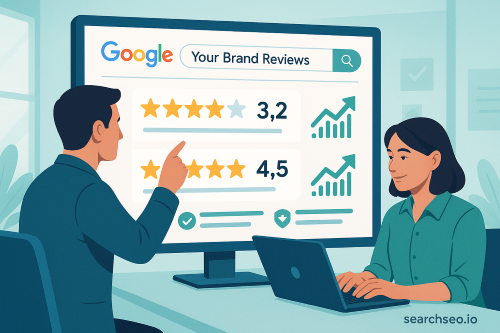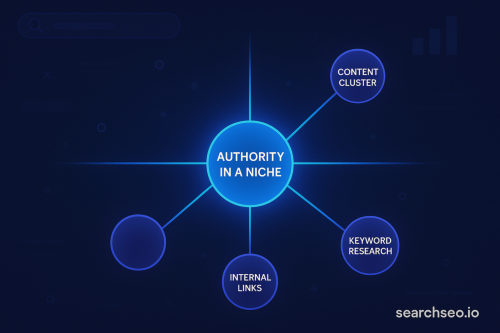Imagine you’ve just brewed your morning coffee, opened your analytics dashboard, and boom, there’s a sudden spike visitors from who knows where. Odds are, those “people” aren’t actually people at all; they’re automated bots: tiny software robots built to act like humans online.
In small, controlled bursts they can be your friend. They’re useful for stress-testing a brand new landing page, double-checking a checkout flow, or helping your SEO team run a quick experiment. Leave them unchecked, though, and they’ll blur your metrics, burn through ad dollars, and even open the door to more serious cyber attacks.
Think of this guide as your coffee-chat companion. We’ll break down the good, the bad, and the downright bizarre world of bot traffic, walk through every major website bot you’re likely to meet, and most importantly, help you decide when automation is smart and when it’s time to hit the brakes.
What is a traffic bot?
Picture the internet as a bustling city and every page‑view as a passer‑by on the sidewalk. Now imagine that half the people you see are actually robots wearing very convincing human costumes. That’s bot traffic in a nutshell: whenever software loads a page, clicks a link, or fills out a form, it registers as a “visit.” A single bot network can unleash thousands, even millions, of these phantom guests in minutes, creating the illusion of a packed house when no real customers have shown up at all.

Core purposes
In practice, most bot traffic campaigns fall into one of three buckets: SEO manipulation, analytics & testing, or competitive intelligence. The sections below unpack how each purpose works and the trade‑offs involved.
SEO manipulation
Traffic bots can be configured to click your site in Google search results, linger on a page, and scroll or interact with elements. These fake engagement signals may nudge rankings upward in the short term, but search engines are increasingly adept at spotting patterns and will penalize sites that rely on them heavily.
Analytics & testing
Developers and growth teams use controlled bot traffic to stress‑test new features, measure server response under load, and validate conversion tracking before a real marketing launch. Synthetic visits create predictable patterns, making it easier to isolate bugs or bottlenecks without risking the experience of actual users.
Competitive intelligence
Bots also serve as tireless research assistants. They can crawl competitor product pages, monitor price changes, or track inventory shifts at scale on schedules no human could match. These insights help businesses adapt pricing, stock, or promotions in near real‑time and increase organic traffic by aligning with market trends.
Traffic bots are automated programs that generate website visits so the traffic appears to come from real people in different locations.
Characteristics of to know
The automated bots share several defining traits that make them both powerful tools and potential threats. Below are the core attributes that shape how they behave and impact web environments.
- Automation: Runs without direct human input once configured.
- Proxy usage: Masks the true origin of requests.
- Custom timing: Can randomize visit duration, scrolling, clicks, and page depth to mimic human behavior.
- Multiple purposes: CTR manipulation, ad‑click inflation, load testing, or fraud.
When used responsibly (e.g., for staged load‑testing or legitimate monitoring), traffic bots can be helpful. Misused, they distort analytics, drain ad budgets, and even take sites offline.
How do they work?
Here’s how bot systems operate in a nutshell. While their sophistication can vary, most follow a predictable pattern that makes them appear like real users to websites and analytics tools.
- Script or software launches and pulls a fresh proxy IP.
- Bot requests a page just like a browser (often with a realistic user‑agent string).
- Optional interaction: Moves the mouse, scrolls, clicks links, or navigates to additional pages.
- Delay/stay time is applied before the bot exits or repeats from step 1.
- Analytics platforms (Google Analytics, Matomo, etc.) log the visit as a new session unless bot‑filtering rules catch it.
Most large‑scale bot traffic networks are orchestrated from the cloud, but some run on compromised “zombie” machines (botnets) to hide their origin even further.
Why they exist
Not all traffic is created equal. Behind every website visit could be a helpful digital assistant or a harmful intruder. Understanding the difference between good and bad traffic bots is key to protecting your brand, optimizing performance, and ensuring your digital strategy stays on track.
Beneficial use‑cases
- Search‑engine crawlers (Googlebot, Bingbot) index web content.
- Monitoring bots check site uptime and performance.
- SEO research crawlers analyze competitors’ pages and SERP positions.
- Copyright bots scan for unauthorized use of protected content.
Malicious goals
- Click‑fraud drains advertisers’ budgets by fake ad clicks.
- Distributed‑Denial‑of‑Service (DDoS) overwhelms servers with requests.
- Web scraping steals proprietary data, prices, or content.
- Spam & form abuse auto‑submits junk comments or leads.
Types of bots at a glance
Good bots: helpers that keep the web running
- Chatbots and virtual assistants – Front‑line customer‑service reps that instantly answer FAQs, route support tickets, and reduce wait times in live‑chat widgets.
- Search‑engine crawlers (spiders) – Automated scouts like Googlebot or Bingbot that discover new pages, fetch updated content, and build the indexes that power organic search.
- Transactional bots – Agents that can check inventory, reserve movie seats, book flights, or execute stock trades faster than any human.
- Informational / feed bots – Curate weather alerts, breaking‑news digests, or sports scores and push them to apps, email lists, or voice assistants on strict schedules.
- Commercial and market‑research bots – Continuously scan public product pages for price changes, reviews, or competitive keywords, feeding real‑time dashboards for business teams.
- CTR manipulation bots – Simulate user behavior by clicking specific listings in search results to influence click-through rates and potentially improve rankings.
- Monitoring and uptime bots – Ping servers every few seconds, log response times, and trigger alerts if latency spikes or a page goes down.
- Accessibility audit bots – Check pages for ARIA roles, missing alt text, and color‑contrast issues to ensure compliance with WCAG guidelines.
- Copyright‑protection bots – Patrol the web for unauthorized copies of images, music, or text and issue takedown notices.
- Performance‑benchmark bots – Run Lighthouse or Core‑Web‑Vitals tests across builds to keep sites within performance budgets.
Bad bots
- Hacker bots – exploit vulnerabilities, inject malware.
- Spam bots – post unwanted promos or phishing links.
- Scraper bots – copy content, prices, emails.
- Impersonator bots – mimic humans to spread propaganda or bypass security.
- DDoS bots – coordinate attacks to knock sites offline.
- Click‑fraud bots – repeatedly hit paid ads.
Advantages to using traffic bots
When used strategically and responsibly, traffic bots can offer unique advantages for testing, optimization, and simulating real-world user behavior at scale.
- Fully automated – runs 24/7 once set up.
- SEO signal testing – simulate dwell time & CTR to gauge ranking hypotheses.
- Multi‑source traffic injection – organic, referral, direct, or social.
- Bounce‑rate reduction – configure longer session lengths.
- Geo‑targeted visits – send traffic from specific countries or regions.
- Mobile vs desktop split – fine‑tune the device ratio.
- Dwell‑time control – set realistic on‑page duration.
- Adult‑industry volume – rapidly test high‑traffic niches.
- Cloudflare bypass (advanced) – sophisticated bots can navigate challenges for load testing.
Legality and ethics
Traffic‑bot use occupies a gray area where technology, law, and professional responsibility intersect.
Is it legal to run bots?
In most jurisdictions automation itself is legal. What turns it illegal is intent (e.g., fraud) or method (e.g., hacking secured systems). Consider these examples:
- Ticket‑scalping laws: The U.S. BOTS Act, as well as California and New York statutes, ban bots that bypass purchase limits for concerts and sporting events.
- Computer Misuse & Cybercrime Acts: In the UK, Canada, Australia, and many EU states, using bots to gain unauthorized access or launch denial‑of‑service attacks can carry prison time.
- Digital Services Act (EU) & Online Safety Bill (UK): Platforms must detect and mitigate large‑scale manipulation, including coordinated bot campaigns.
Industry & platform policies
- Ad networks (Google Ads, Meta, TikTok): Accounts committing click‑fraud are suspended and can be liable for wasted spend.
- Search engines: Sites inflating dwell time or CTR with bots risk de‑indexing or ranking penalties.
- E‑commerce marketplaces (Amazon, eBay): Terms forbid large‑scale scraping or automated purchasing; violators face bans and civil action.
Ethical best practices
- Transparency: Label synthetic traffic in analytics and inform stakeholders before running tests.
- Consent: Avoid crawling, scraping, or submitting forms without explicit permission from the site owner.
- Minimal impact: Throttle request rates, follow crawl-delay directives, and keep concurrent connections low to avoid server strain.
- Respect robots.txt: Obey disallow rules and honor noindex headers or meta tags.
- Data security: Store any collected data securely, encrypt sensitive fields, and purge logs once they’re no longer required.
- Accountability: Keep detailed logs of bot activity and be prepared to share them during audits or security reviews.
With the growing prevalence of traffic delivered by bots, the web traffic industry has seen significant growth. More companies are now turning to automated solutions to simplify and enhance their digital marketing efforts. One of the leading providers in this space is SearchSEO.
Our traffic services replicate human behavior, including relevant clicks, scrolling activity, and extended session durations. This helps increase your organic click-through rate (CTR), boost the number of pages visited per session, improve time spent on site, and enhance your backlink profile. These combined factors contribute to higher search engine rankings, often requiring fewer backlinks thanks to more natural and targeted interactions. To learn more, check out our traffic bot comparison article
Clients typically begin to see noticeable improvements in their rankings within two to three months of using SearchSEO tools and services. For more information or to get started, reach out through our live chat or email us at hello@searchseo.io.


.svg)

.svg)
%201.png)








.svg)